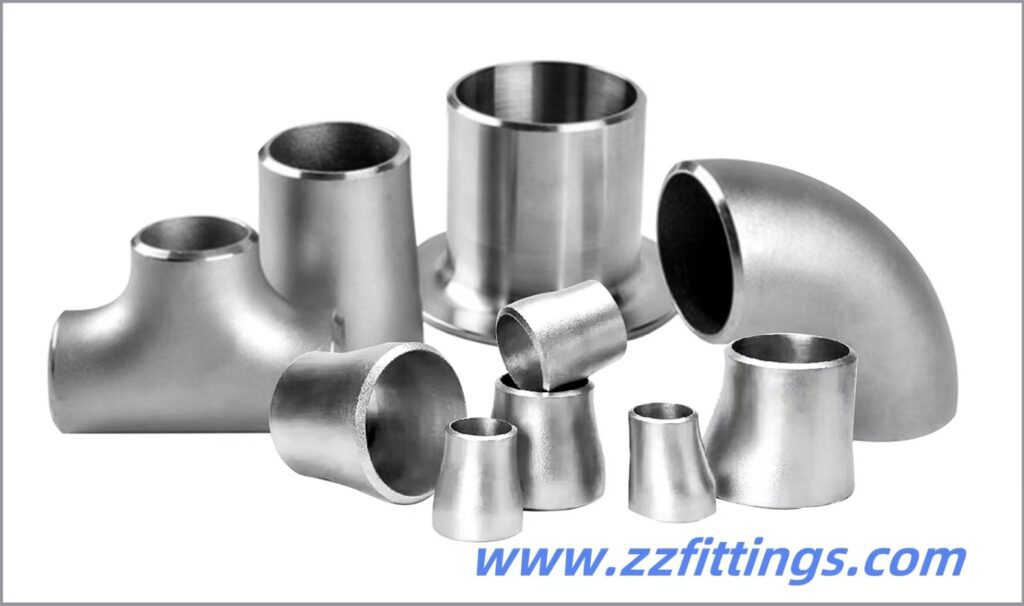
We specialize in the production of a wide range of Hastelloy alloys, including Hastelloy C, C-276, C-2000, C-22, B-2, B-3 and more. Our Hastelloy alloys provide outstanding corrosion resistance and thermal stability, making them widely used in severe industrial environments like aerospace, chemical processing, and etc. Among them, Hastelloy B-2 and C-276 are two popular nickel-based alloys. While both are high-performance materials, they differ significantly in chemical composition, corrosion resistance, mechanical strength, toughness, and weldability. Below, we’ll take a closer look at the key differences between these two alloys.
Introduction to Hastelloy B2 vs C276
Hastelloy B-2 (UNS N10665, Werkstoff 2.4617) is a nickel-molybdenum alloy primarily composed of nickel (Ni) and molybdenum (Mo), with very low carbon and silicon content. It provides outstanding resistance to reducing environments, particularly strong hydrochloric acid and other highly corrosive reducing media. Its excellent corrosion resistance, combined with good mechanical strength and weldability, makes it ideal for many applications involving severe chemical conditions, like chemical reactors, heat exchangers, marine vessels, petroleum refining, and wastewater treatment plants, especially where strong reducing acids are present.
Hastelloy C-276 (UNS N10276, W. Nr. 2.4819) is nickel-molybdenum-chromium alloy. It contains nickel, molybdenum, chromium, and small amounts of iron and tungsten. They have excellent corrosion resistance, high-temperature performance, and mechanical strength, as well as outstanding toughness, strength, and good weldability. It is designed to resist corrosion in strong acids, chlorides, oxides, and other extreme environments. It is widely used in industries such as petrochemicals, chemical processing, energy, and metallurgy. Therefore, it is particularly suitable for environments with both oxidizing and reducing substances, including flue gas desulfurization systems, chemical processing plants, and nuclear waste treatment sectors.
Chemical Composition of Hastelloy B2 vs C276
As can be seen from the following table, As shown in the table, C-276 contains more chromium and tungsten, giving it excellent resistance to oxidation and crevice corrosion, making it ideal for oxidizing environments. B2, with high molybdenum and low chromium, is designed for strong reducing acids like hydrochloric and hydrofluoric acid, but it can corrode in oxidizing conditions. So, C-276 offers better overall corrosion resistance and wider use, while B-2 is better for specific reducing environments.
| Element | Hastelloy C276 (%) | Hastelloy B2 (%) |
| Carbon (C) | ≤0.01 | ≤0.02 |
| Manganese (Mn) | ≤1.00 | ≤1.0 |
| Phosphorus (P) | ≤0.04 | ≤0.040 |
| Sulfur (S) | ≤0.03 | ≤0.030 |
| Silicon (Si) | – | ≤0.10 |
| Chromium (Cr) | 14.5 – 16.5 | ≤1.0 |
| Nickel (Ni) | Remainder (rem) | Balance |
| Molybdenum (Mo) | 15.0 – 17.0 | 26.0 – 30.0 |
| Cobalt (Co) | ≤2.5 | ≤1.0 |
| Iron (Fe) | 4.0 – 7.0 | ≤2.0 |
| Tungsten (W) | 3.0 – 4.5 | – |
| Vanadium (V) | ≤0.35 | – |
Physical Properties of Hastelloy B2 vs C276
Hastelloy B2 is denser and has a fixed melting point, which helps with temperature control and energy efficiency. C276 is lighter and has a wider melting range, offering better thermal stability, making it more suitable for high-temperature and weight-sensitive applications like aerospace.
| Property | Hastelloy B2 | Hastelloy C276 |
| Density (g/cm³) | 9.2 | 8.89 |
| Melting Point (°C) | 1370 | 1350 – 1390 |
Mechanical properties of Hastelloy B2 vs C276
Hastelloy B2 is denser and has a fixed melting point, which helps with temperature control and energy efficiency. C276 is lighter and has a wider melting range, offering better thermal stability, making it more suitable for high-temperature and weight-sensitive applications like aerospace.
| Element | Tensile Strength | Yield Strength (0.2%Offset) | Elongation |
| Hastelloy B2 | Psi – 110,000 , MPa – 760 | Psi – 51,000 , MPa – 350 | 40% |
| Hastelloy C276 | Psi – 52,000 , MPa – 355 | Psi – 115,000 , MPa – 790 | 40% |
Corrosion Resistance of Hastelloy B2 vs C276
Hastelloy B2 alloy offers excellent corrosion resistance in many reducing environments, especially hydrochloric acid of any concentration and temperature under normal pressure. In oxygen-free conditions, it also performs well against moderate sulfuric acid, all levels of phosphoric acid, and high-temperature organic acids like acetic and formic acids. It also resists bromic acid, hydrogen chloride gas, and halide catalysts. Therefore, Hastelloy B-2 is widely used in tough chemical and petrochemical processes, such as hydrochloric acid distillation, ethylbenzene alkylation, and low-pressure acetic acid production.
Hastelloy C276 exhibits excellent corrosion resistance to most corrosive media in both oxidizing and reducing atmospheres. It has outstanding resistance to pitting, crevice corrosion, and stress corrosion. It is one of the few materials capable of withstanding corrosion from moist chlorine, hypochlorite, and chlorine dioxide solutions. It also shows remarkable corrosion resistance to high-concentration chloride salt solutions, such as ferric chloride and cupric chloride.
Features of Hastelloy B2 vs C276
Hastelloy B2:
- Controls iron and chromium at minimum levels to prevent β phase Ni₄Mo formation.
- Excellent corrosion resistance in reducing environments.
- Very good resistance to moderate concentrations of sulfuric acid and many non-oxidizing acids.
- Strong resistance to chloride-induced stress corrosion cracking (SCC).
- Outstanding resistance to various organic acids.
Hastelloy C276:
- Excellent corrosion resistance
- Outstanding high-temperature performance
- Good mechanical properties
- Excellent weldability
Application of Hastelloy B2 vs C276
Hastelloy B2 nickel-based alloy is widely used in many harsh environments due to its excellent heat resistance and corrosion resistance. It has broad applications in chemical, petrochemical, energy production, and pollution control fields, especially in industries involving H₂SO₄, HCl, H₃PO₄, CH₃COOH, etc.
Hastelloy C-276 alloy is widely applied in chemical and petrochemical sectors, including in components and catalytic systems that contact chloride-based organic substances. It’s highly suitable for high-temperature environments, mixed-impurity inorganic/organic acids (e.g., formic acid, acetic acid), and seawater corrosion.
Cost of Hastelloy B2 vs C276
Overall, Hastelloy C276 generally has a higher cost than Hastelloy B2 under identical specifications and quality criteria. Still, the specific price may differ based on market volatility, order volume, processing demands, and other practical conditions.
Hastelloy B2 vs C276: Choose the Better One
While Hastelloy B2 and Hastelloy C276 are both high-performance corrosion-resistant nickel alloys with high nickel and molybdenum content, they have key differences in performance and uses:
- Hastelloy B2 excels at resisting reducing corrosion, making it ideal for chemicals like hydrochloric and sulfuric acid. It works well in medium or low-temperature settings.
- Hastelloy C276 protects against extreme corrosion and oxidation, handles heat up to ~1370°C, and is better at resisting pitting/crevice corrosion and easier to weld.
- You should choose between them by considering their specific environment (corrosion type, temperature) and budget to pick the best alloy.
Professional and Reliable Hastelloy B2 and C276 Supplier
We are specialized manufacturers of Hastelloy B2 and C276 materials, dedicated to producing a wide range of Hastelloy alloys. Our product lineup includes various forms, such as sheets, plates, pipes, bars, fittings, and forgings. We can customize products to comply with international standards (like ASTM, ASME, ISO). If you have any requirements, please contact us immediately.
